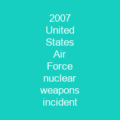Understanding Nuclear Weapons: A Global Overview
Imagine a world where the balance of power is dictated by the possession of an ultimate weapon—nuclear bombs. Eight countries have publicly declared their nuclear capabilities, each with its own unique history and current status.
The Five Nuclear-Weapon States (NWS)
The United States, Russia, the United Kingdom, France, and China are recognized as NWS under the Non-Proliferation Treaty. These nations have a combined total of 12,119 nuclear warheads, with 3,880 being active.
United States
The US was the first to test a nuclear weapon in 1945, and its arsenal has grown significantly since then. With around 3,800 operational warheads, the US maintains a robust nuclear triad that includes intercontinental ballistic missiles (ICBMs), submarine-launched ballistic missiles (SLBMs), and strategic bombers.
Russia
As the successor to the Soviet Union, Russia has one of the largest nuclear arsenals. At its peak in 1986, it had over 45,000 warheads. Today, it maintains around 3,200 active warheads.
United Kingdom
The UK developed and tested its first nuclear weapon in 1952, closely collaborating with the US during the Manhattan Project. It has a smaller but still significant arsenal of approximately 215 warheads.
France
France tested its first nuclear weapon in 1960 and became fully independent in 1968 when it developed its own hydrogen bomb. France’s current stockpile is estimated at around 300 warheads, with a dual system based on SLBMs and medium-range missiles.
China
China tested its first nuclear weapon in 1964 and has since modernized its arsenal. With an estimated total of about 500 warheads, China is projected to deploy as many ICBMs as Russia or the US by 2030.
The Three Other States with Nuclear Weapons
India, Pakistan, and North Korea have declared nuclear possession, each with its own unique history and challenges.
India
India is not a party to the NPT but tested its first nuclear weapon in 1974. It has since grown its stockpile, adopting a ‘no first use’ policy. India’s nuclear arsenal is expected to continue growing over the coming decade.
Pakistan
Pakistan covertly developed nuclear weapons starting in the late 1970s and conducted its first tests in 1998. With an estimated 260-350 warheads, Pakistan’s nuclear program remains a significant regional concern.
North Korea
North Korea was once a party to the NPT but withdrew in 2003 and claimed to possess functional nuclear weapons by 2005. Despite limited success, North Korea declared itself a nuclear state in 2016, with an estimated 20-60 warheads.
Israel: The Unofficial Nuclear Power
Israel is believed to possess between 80 and 400 nuclear weapons. Although not a party to the NPT, Israel maintains strategic ambiguity regarding its nuclear program. The country has shared its nuclear capabilities with NATO through nuclear weapons sharing agreements.
The Past and Present of Nuclear Weapons
South Africa once produced six nuclear weapons in the 1980s but dismantled them by the early 1990s after acceding to the NPT. Kazakhstan, Ukraine, and Belarus have also had their nuclear arsenals transferred or removed over time.
Kazakhstan
After the Soviet Union’s collapse, Kazakhstan inherited 1,400 nuclear warheads but transferred them to Russia by 1995.
Ukraine
When Ukraine became independent in 1991, it had up to 3,000 nuclear weapons. By 1996, these were removed from its territory.
Belarus
During the Soviet era, Belarus had single warhead missiles stationed on its territory but transferred them to Russia by 1996.
The Global Landscape of Nuclear Weapons
Nuclear weapons have been present in many nations as staging grounds under control of other powers. For instance, the US has deployed nuclear weapons outside its territories and shared countries like South Korea, the Philippines, Taiwan, and others. Russia claims to share nuclear weapons with Belarus, while NATO maintains strategic ambiguity regarding these deployments.
These numbers and histories paint a complex picture of global nuclear capabilities. As we look at the current landscape, it’s clear that the world remains deeply intertwined with the presence of nuclear weapons. The question is: How can we ensure peace in an era where such powerful tools exist?

You want to know more about List of states with nuclear weapons?
This page is based on the article List of states with nuclear weapons published in Wikipedia (retrieved on March 6, 2025) and was automatically summarized using artificial intelligence.






